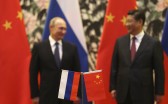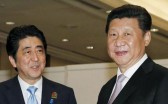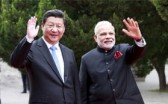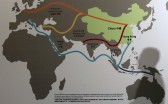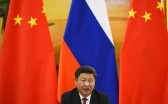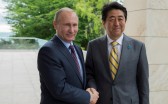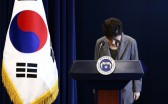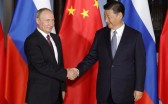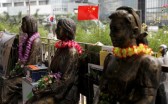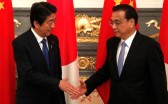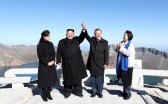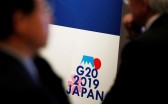The upcoming G20 meeting in Osaka provides Japan with an opportunity to set a bold agenda across an array of global issues, and the dangerous temptation for host countries to pursue too many different ones. All too often the diplomatic pattern has been to generate a laundry list of micro steps that fail to add up to results that move the needle. We saw warning signs that Osaka might fall into this trap in late 2018, when Prime Minister Abe laid out at least seven priorities.1 The perennial problem is exacerbated by the proliferation of ministerial meetings that parallel the leaders’ summit, with eight events in Japan over the course of 2019 competing for international attention, on every topic from agriculture to tourism. Fortunately, this time the winnowing process has been disciplined, and there will be three main themes for the leaders to address.
First, and most significant of the three, Japan is laying the Osaka Track of plurilateral trade negotiations. It aims to restore the momentum of trade liberalization, regulatory harmonization, and, eventually, multilateral cooperation under the global rules-based system. It is a tall order, particularly so because the gaps among the members of the WTO that stalled the Doha Round negotiations for fifteen years remain enormous. Furthermore, the international community faces deepening anti-trade sentiment in the United States, buttressed by deep skepticism of multilateralism in general among Republicans in the Trump administration. Worst of all, the tit-for-tat sanctions escalating the US-China trade war have begun to threaten the global economy as they bite into regional production networks.
As Matthew Goodman of CSIS recently wrote, the G20 has two aspects: The summit and various side meetings between leaders, and the latter can often be of greater significance than the whole group event itself.2 If Osaka merely serves as the place where the United States and China patch up their bilateral trade war, it will be highly significant. Experts in Beijing, Tokyo, and Washington are not showing much optimism, however. Although the Chinese side has signaled that it would prefer to find some compromise, it remains uncertain about what Donald Trump will accept and stick with. Some White House advisors do not seem to want to take yes for an answer, pushing for economic decoupling from China rather than rebalanced but growing trade and investment connections. Even if Trump and Xi Jinping reached some consensus on the points dividing them, could they put the overall relationship back on track?
Other bilateral meetings likewise fail to generate much enthusiasm – the Abe-Putin meeting that had been built up as a possible major breakthrough is now expected to produce nothing much at all, while the Abe-Xi meeting will confront the inherent limits of China-Japan relations in the context of US-China strategic rivalry. The Trump-Abe meeting is expected to again defer matters of the bilateral trade negotiations until after the upcoming Upper House elections in Japan.
Nonetheless, Japan sees some reasons to make it worth pushing ahead on the international economic cooperation agenda beginning with Osaka. The emerging functional area of digital economy, e-trade, and data governance commands the greatest attention. Japan holds a central position between the United States and Europe in terms of the appropriate regulatory role in this dynamic sector. One Japanese expert explained that while Japan, like Europe, has no tech giant like Google, Apple, Facebook, and Amazon, it expects that its firms will play a significant role as the Internet of Things becomes a reality in manufacturing equipment and consumer goods. Japan has advanced the concept of “Data Free Flow with Trust” to reduce barriers to the sharing of information while protecting individual privacy.
Also, vital to understanding the Osaka Track is the realization that it is not meant to accomplish everything in 2019. Even though expectations are low that next year’s G20 host, Saudi Arabia, will prioritize trade liberalization as a key agenda item, the Japanese are resisting the pressure to overreach now. Instead, they plan to sustain the Osaka Track across a range of plurilateral venues, such as APEC, ASEM, G7, the East Asia Summit, or any others where it might find traction. It is a shrewd initiative in branding and one that might well mark a turning point in the long-term history of global trade liberalization.
Second on the Osaka agenda is quality infrastructure. Japan has been a leader in attending to life-cycle cost and debt burden management, and aims to raise the standards amid growing concern that China’s Belt and Road Initiative (BRI) projects do more to advance PRC interests (from export of excess construction capacity to strategic control of ports) than benefit the recipient countries. China itself has been seeking for ways to ease back from overextension on the BRI, and is eager to prevent any negative reputational risks, so it has already signaled that its infrastructure investments will meet higher standards.
With most of the donor community present in Japan this June, there is a great opportunity not only to improve the overall quality of projects, but also to incorporate concerns about sustainability in every sense. In particular, the Osaka summit raises a rare chance to establish environmental considerations as a baseline consideration for infrastructure aid. For example, the parties might agree to a code of conduct to minimize the net carbon emissions for new power plants built with bilateral financing.
Third, Japan’s concerns about marine biodiversity and reducing plastic waste in the ocean resonate across the spectrum of G20 participants. As a major consumer of ocean products, Japan hopes to gain some credit for addressing a global environmental issue while also protecting its own food supplies. The explosion of plastic waste is so plainly a blight on the natural world, this area ought to find all members of the G20 ready to commit to greater cooperative action. Given the US withdrawal from the Paris Accord, any direct action on climate change would be met with stiff resistance from the Trump administration; so Japan is making a pragmatic decision to put its energy behind a less ambitious but more realistic target. Of such small steps will the overall framework of global response to environmental crisis be rebuilt?
Other topics such as global health, aging, and sustainable development goals (SDGs) have been forced off the main agenda for Osaka, but these will not be completely neglected. They have been and will be addressed in the ministerial meetings held across Japan throughout 2019. As Japan is a frontrunner in facing rapid and extreme aging, it has already begun developing policies and visions for a thriving society, drawing on advances in technology and medical care. It can deploy these strengths as a global leader in coping with demographic change, which will affect most other G20 members to an increasing degree. Japan will rely on the Health Ministers Meeting in Okayama City in October as an opportunity to spread awareness of ways it has already begun to adapt to a population that has more elderly than youth. On SDGs, Japan will also host the TICAD7 (the Seventh Tokyo International Conference on African Development) in Yokohama this August, and will use that occasion to help the international community recommit to achieving more meaningful progress toward targets.
When every issue has its own powerful advocates and stakeholders, it has not been easy to streamline the Osaka summit agenda and sideline some urgent problems. But Japan is intent on delivering real results, not just photo ops; so Abe’s team has exercised discipline to ensure an agenda with strong prospects. The issues of marine pollution and quality infrastructure will yield tangible immediate benefits, and the development of the Osaka Track will leave a positive legacy long after the end of the G20 summit.
1. See: John Kurton, “Japan’s Priority Agenda for its G20 Osaka Summit 2019,” Munk School of Global Affairs and Public Policy, University of Toronto, http://www.g20.utoronto.ca/analysis/181201-kirton-osaka-priorities.html
2. Matthew P. Goodman, “G20 Osaka: Inside and Out,” Center for Strategic and International Studies, https://www.csis.org/analysis/g20-osaka-inside-and-out

